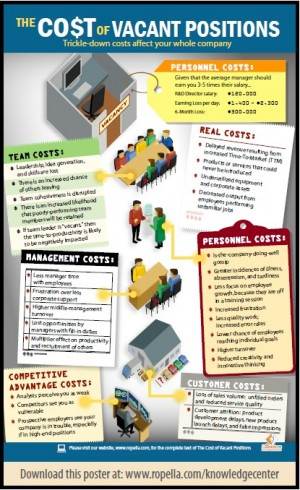 Looking to drive your business to the next level? Then it’s time to start thinking about how an effective compensation plan may be the key to jump-starting your staff, increasing performance, and creating a ”buzz” that will make you an employer of choice.
Looking to drive your business to the next level? Then it’s time to start thinking about how an effective compensation plan may be the key to jump-starting your staff, increasing performance, and creating a ”buzz” that will make you an employer of choice.
As the chemical industry grows, corporations must work harder to attract and retain top talent, as well as continue to provide an environment in which its employees and business can thrive. In an increasingly competitive market like the chemical industry, one way of doing this is by taking an “out of the box” approach toward issues such as compensation and incentive plans.
The following outlines the pros and cons of four of the most popular rewards based compensation plans. Three of these plans offer compensation that is based on the skills and performance of an individual employee, and the fourth examines the concept of a profit sharing plan that is based on the company’s overall success.
Skill-Based Pay
As implied by the name, skill-based pay rewards employees for improving their proficiency in essential job skills. Widely used in manufacturing, skill-based pay is now becoming increasingly popular in other work environments. The basis behind this pay structure is that employees are paid based on their skill level—not the position they hold.
Managers start by developing a list of skills needed to excel in a specific position. Each skill is then ranked by importance. As employee gains mastery of these skills, their compensation is increased accordingly.
Pros
- It creates a strong incentive for employees to improve their skills and master their job duties.
- It leads to higher productivity rates and improves quality.
- Companies usually find a higher commitment to organizational goals.
- Employees’ self-management skills are improved.
- Employees adapt to changes in work environment and technology quicker.
Cons
- After an employee reaches the top of the skills chart, their compensation reaches a plateau, which may result in morale issues.
- It can sometimes be difficult to develop skill charts in non-manufacturing work environments.
- If technology and skill sets change frequently, you will need to continually update your skills assessment.
- A large amount of time may be needed to accurately assess the skills of employees.
- Some skills are difficult to objectively measure.

Competency-Based Pay
Competency-based pay is similar to skills-based in that it focuses on what the employee brings to the table. However, competency-based pay looks at general attributes of the employee as opposed to specific skills.
In this compensation plan, the employer develops a list of important characteristics (detail-oriented, strong leadership, ability to handle multiple tasks, etc.) and bases compensation on the extent to which the employee displays these skills in their daily job activities.
Pros
- Gives employees a reason to show consistently high performance.
- Encourages employees that wish to be paid for their contributions, not simply based on the number of years with the company.
Cons
- It can be very difficult to generalize what employee attributes actually result in increased productivity and job competency.
- Competency can be very difficult to measure and is often seen as subjective.
- Employees may see this form of compensation as favoritism, which may cause morale problems.

Variable Compensation
In this model, employees are paid a below-average base salary and can earn additional bonuses by meeting or exceeding set goals. In many companies, employees are given 75-90% of market compensation. They are then given individual, departmental and corporate goals. If these goals are met or exceeded, the employees can earn above market compensation.
Pros
- Employees see a direct correlation between their performance and pay.
- Employees generally work together more effectively in order to meet departmental goals.
- Provides a personal connection between the employee and the company’s goals and success.
- Allows top performers to achieve above market compensation.
Cons
- When the economy is down or the company is under performing, it may be impossible for employees to meet their goals, therefore compensation lags and morale can become a problem.
- A fairly complex system must be created and maintained in order to measure goals. In some instances complex computer tracking may be needed.
- May be difficult to separate team and individual performance and awards.
Profit Sharing
Perhaps one of the most popular trends in competitive markets like the chemical industry is profit sharing. In this model, employees are paid a base salary, and receive profit sharing on a quarterly or annual basis. It is most commonly given only to full-time employees, and takes the form of either stock options, pre-tax dollars contributed directly to a 401K plan, or a bonus check. Generally the company will contribute a percentage of its earnings to a profit sharing pool, and divide it among the staff on a pro-rated basis according to the base salary of each employee.
Pros
- Unites the staff with a common goal to work toward.
- Encourages employees to think about the “big picture” and focus on company profit.
- It is a safe alternative to other incentive plans, as it is directly tied to profitability. If the company has a slow year, the payout to employees is smaller.
Cons
- It is tied to base salary which may cause a division among the ranks.
- It does not take into consideration individual performance or goals.
- A small payout can trample expectations, and have an adverse effect on morale.
Benefits Package
Benefits Packages
Another entity of compensation packages that is becoming more progressive is benefits. The trend is moving toward more choices for the employee and diverse plans that cater to a growing need for a work-family balance. In addition to the standard health, life, dental and eye insurance, some companies are now offering discounted health club memberships, commuting cost reimbursement, and funds for dependent care. Rather than offer a fixed plan for each employee, some companies set aside a specific dollar amount, and let the employee custom-make their own plan.
Two important things to remember when choosing options for benefits packages are:
- Choose benefits that will provide a decent return on your investment. For example, offering on-site flu shots and smoking cessation classes could reduce sick time and medical claims over the long run.
- Find out what’s important to your staff so that you’re providing them with options they want. Conducting an informal poll will give you the information you need.
Which system is best for your company goals?
Finding an effective compensation plan for your company means that the plan must work equally in favor of the employee, as well as with the company’s overall goals and purpose. Every company has its own unique products, people, and processes. What works in one organization may not work in another. Although there are pros and cons to all of the plans presented above, finding something that works for you and your staff can mean the difference between an average year and a stellar year.



